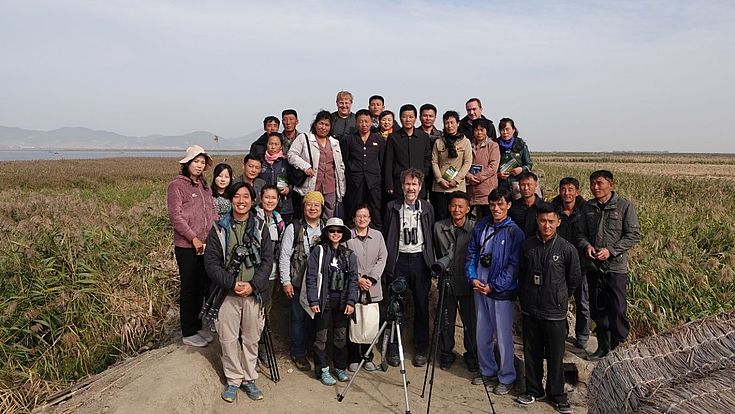Video
Documentary about the Mundok Migratory Bird Reserve

The Documentary focuses on the Mundok Migratory Bird Reserve, that was designated as the first Ramsar Site of International Importance in 2018. Over 50.000 migratory birds rest here on their flyway, the East Asian-Australasian Flyway. Every year, multiple bird species, such as the Black-faced Spoonbill, the Hooded Crane or the Swan Goose, are visiting the wetland. In addition, the reserve is a habitat for many amphibians.
The Swan Goose Festival, that was co-organized by HSF Korea and aimed to raise awareness on the wise use of wetlands among the local population in North Korea is introduced in the documentary as well. Within the scope of the festival representatives of HSF an its close partner EAAFP (East Asian-Australasian Flyway Partnership) were interviewed. Dr. Bernhard Seliger, representative of HSF Korea emphasized the importance of the reserve for migratory birds on the East Asian-Australasian Flyway. Doug Watkins and Vivian Fu from EAAFP shared their expertise on the Mundok Reserve as well.

HSF Korea carries out projects like the Mundok Migratory Bird Reserve together with its close partners to raise national and international awareness on the biodiversity of the Korean Peninsula. A healthy environment is an indicator of a healthy local population, which is why it is important to strengthen the environmental awareness of the North Korean population to support development and wealth. The integration of North Korea into the international community should be encouraged as well. International cooperation can assist in a sustainable peacemaking process on the Korean Peninsula.

